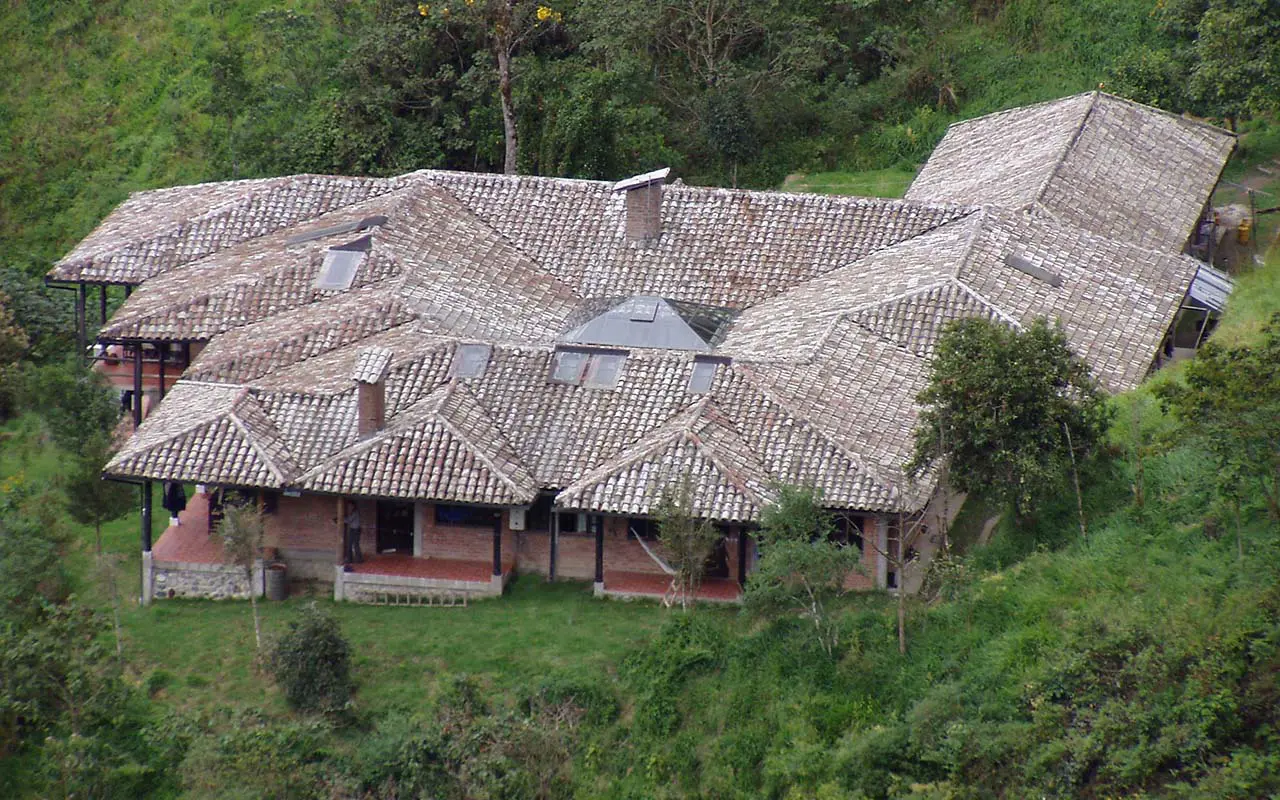Mid-Altitude Tropical Forest
As water vapor from the Amazon moves west, it rises and cools, causing clouds that perpetually blanket the Andes
The extraordinary cloud forests of the Andes are a type of mid-altitude tropical rainforest that extends from about 3,000 feet in elevation up to about 8,000 feet. When humid air, transpired from the billions of trees in the lowland Amazon, moves west and up the mountain slopes of the Andes, some of it condenses and falls as rain or remains in the form of low clouds and mist.

Plant diversity in the cloud forests of Nature and Culture’s Numbala Valley Reserve
The terrain in Cloud Forests is often on steep slopes. These higher-elevation forests are characterized by waterfalls and quick-moving, shallow rivers. Trees are often covered in plants called epiphytes, which capture much of the moisture found in cloud forests.
Clouds and mist condense on the epiphytes’ leaves and pool at the bases of epiphytes, providing habitat for insects and some types of frogs.
Andean cloud forests are a top priority for biodiversity conservation because they are home to a remarkable number of endemic species.
The Andean cloud forests are the most diverse, fragile, and complex cloud forests on earth.
An Andean bear sometimes called the spectacled bear, is primarily found in Andean cloud forests.

The marvelous spatuletail hummingbird in the state of Amazonas in Peru.
More than 300 species of birds are found in the cloud forests of Peru alone
23 bird species are threatened, including the royal sunangel hummingbird, the ochre-fronted antpitta, the marvelous spatuletail, and the rare long-whiskered owlet. The forests also harbor the endangered yellow-tailed wooly monkey and five frog species. In Peru, more than one-third of the 270 endemic birds, mammals, and frogs are found in cloud forests.

An orchid has attached a pollen packet to a male euglossine bee pursuing some floral fragrance.
Andean cloud forests are home to the greatest number of the world’s orchids
Environmental conditions change rapidly with elevation in the cloud forests. Consequently, plant diversity in the cloud forests exceeds that of the Amazon rainforests. For example, cloud forests are home to the greatest number of the world’s orchids. Ecuador alone has over 4,000 species with 1,300 endemic species, found nowhere else in the world.
Many conservationists consider Cloud Forests the world’s greatest conservation priority.

Nature and Culture’s San Francisco research station is the largest cloud forest facility in the world, performing $40 million in research annually.


Andean cloud forests are critical to protect because of their incredible biodiversity. These live moths were photographed in a single night in the cloud forests of Amazonas state in Peru. Cloud forests’ steep slopes and fragile soils make them highly susceptible to erosion and degradation. In the past, their remoteness kept these beautiful forests inaccessible, protecting them from human encroachment. Today, however, with modern techniques and equipment, these cloud forests are increasingly threatened as people clear large areas for agriculture or timber. Colombia, for example, is one of the countries with the largest area of cloud forests, yet only 10–20% of the initial cloud forest cover remains. Significant areas have been logged or converted to industrial-scale plantations.



